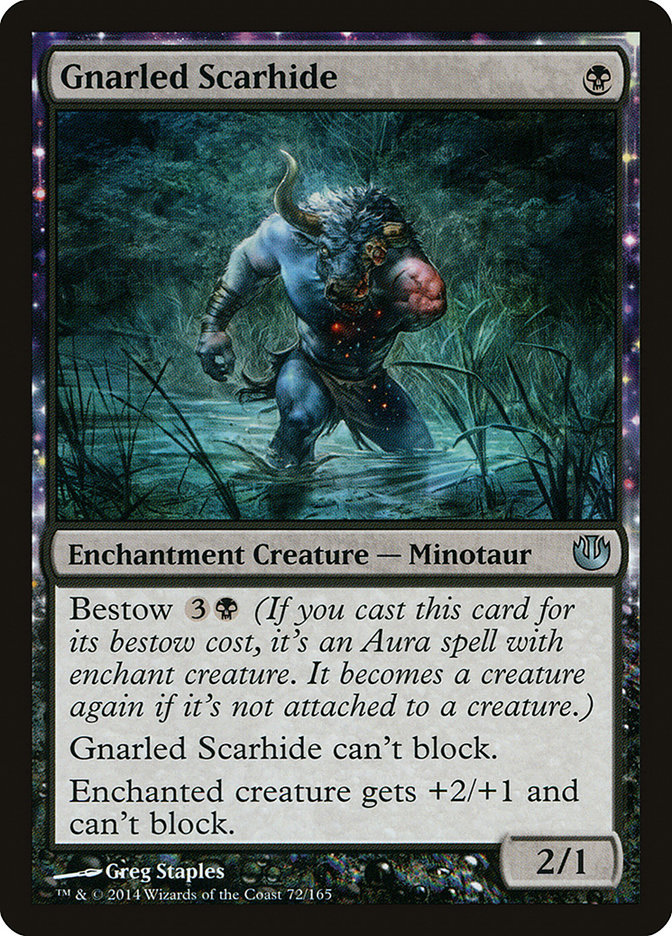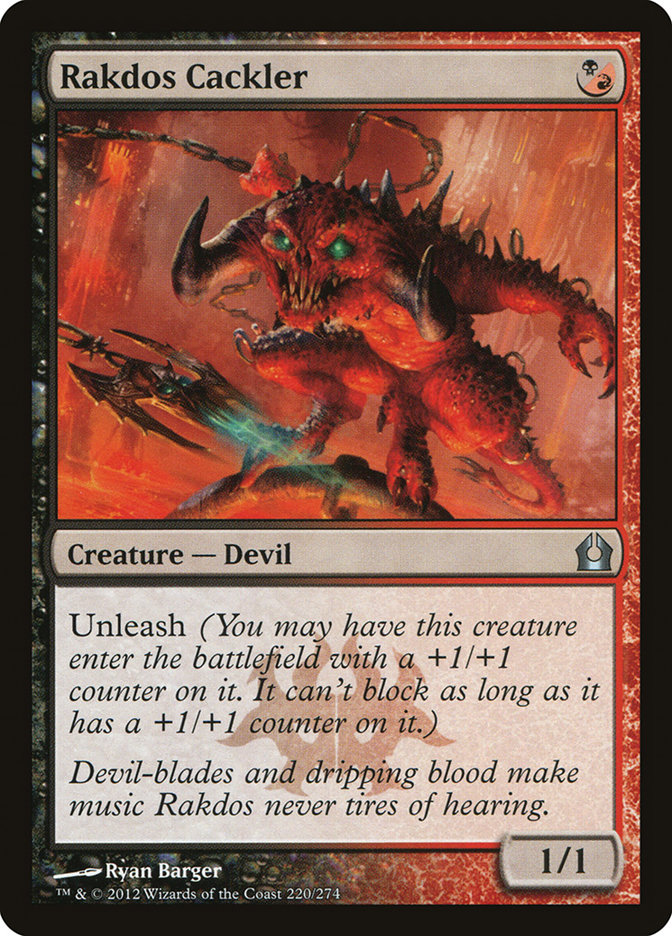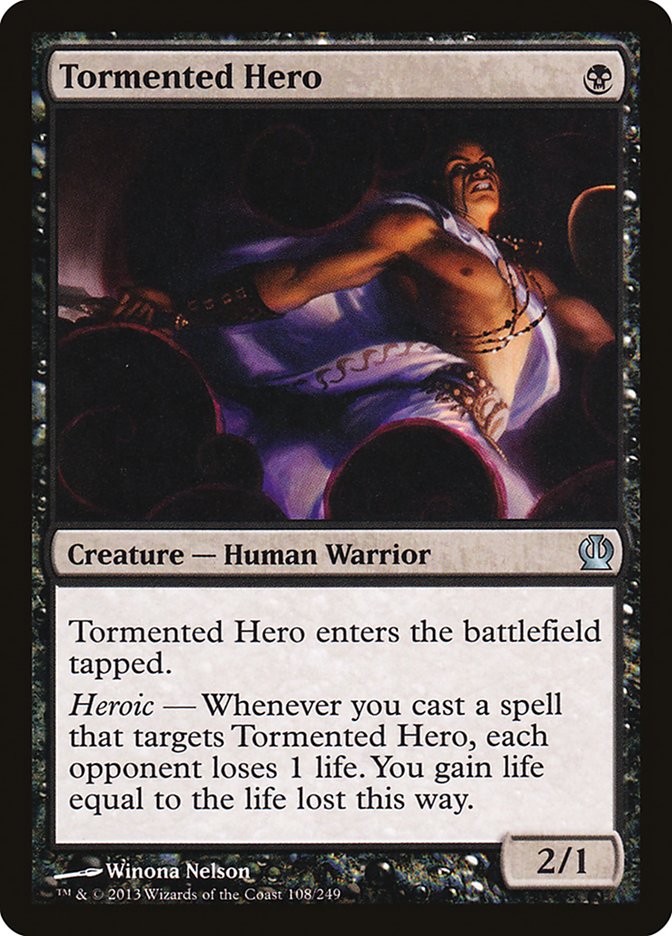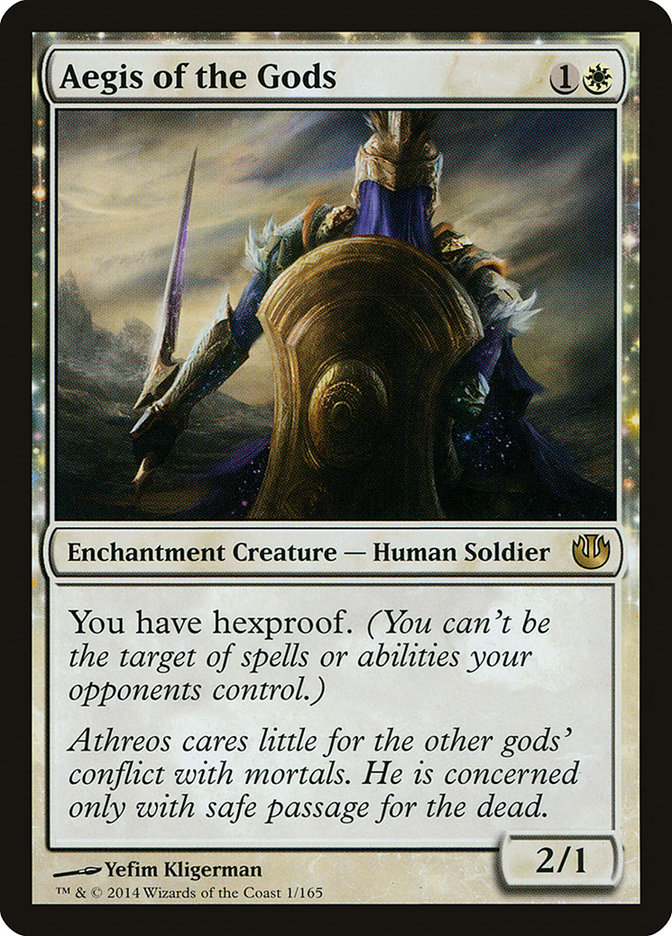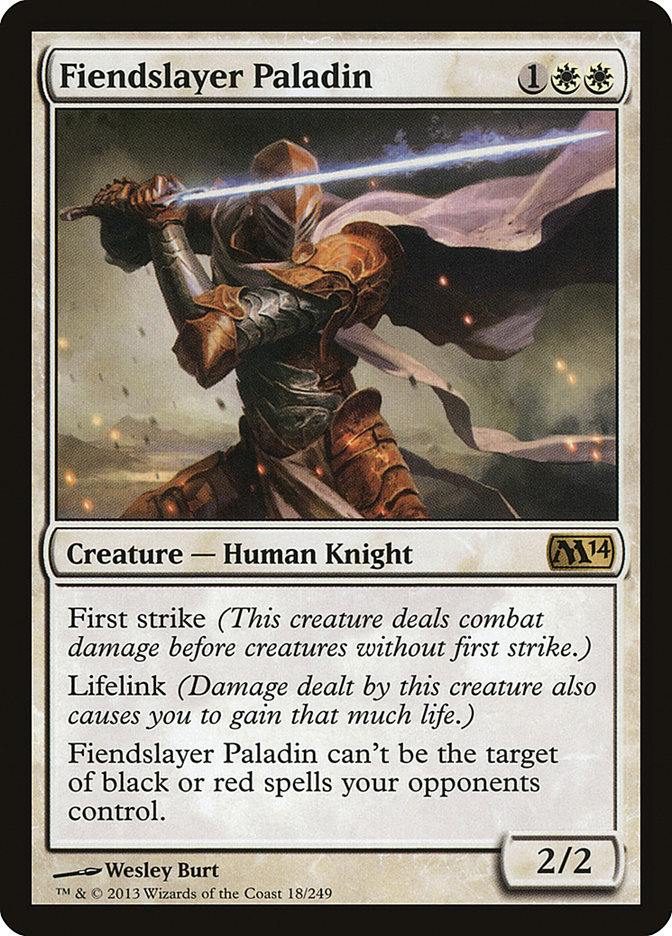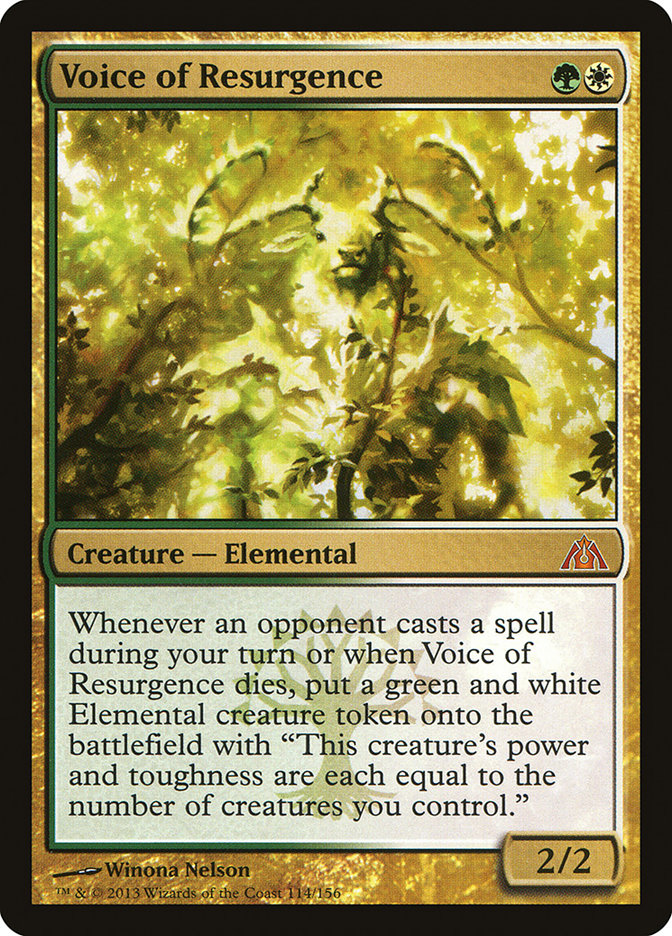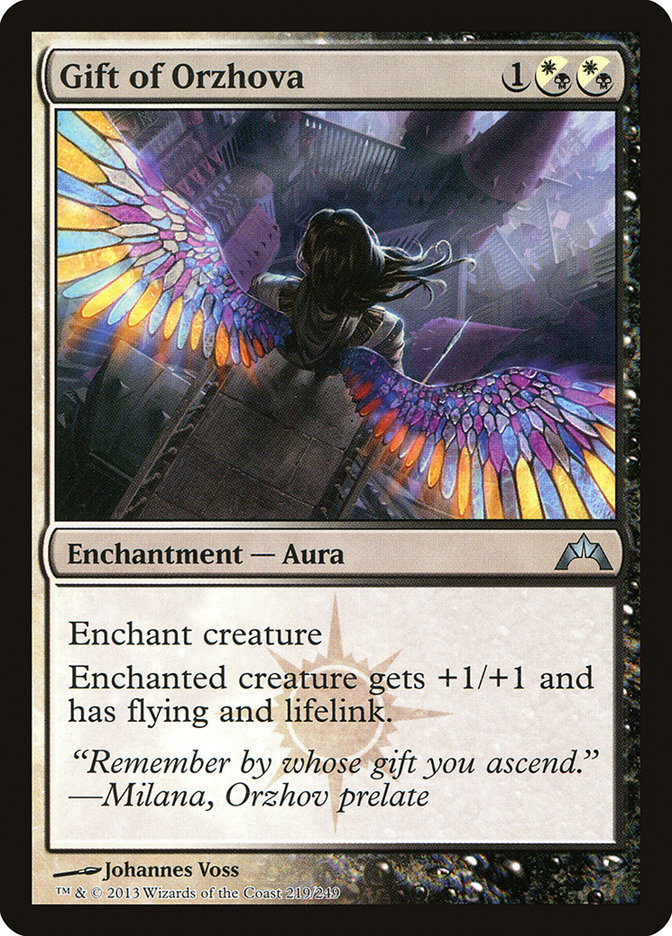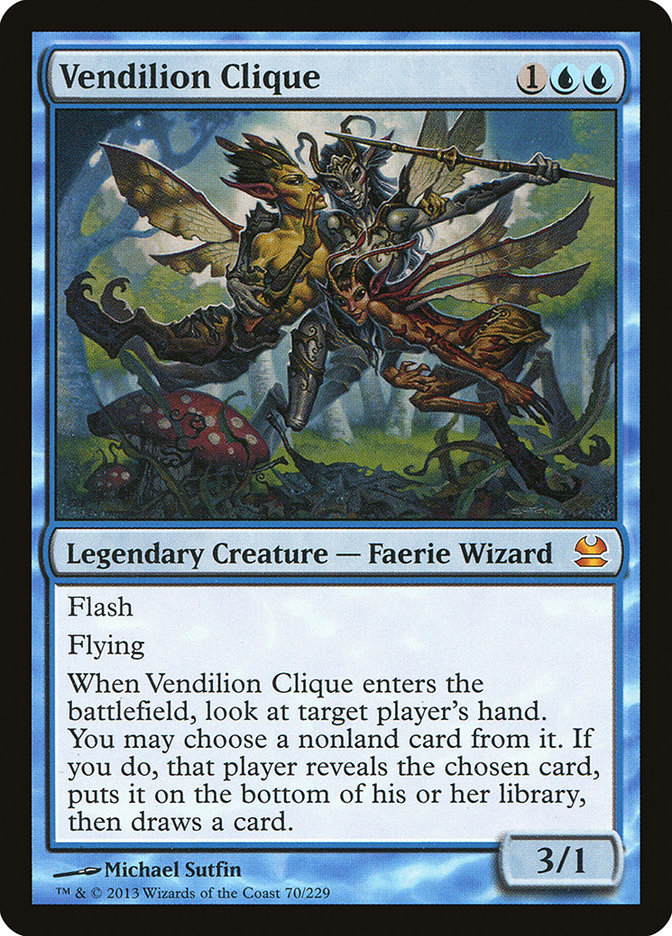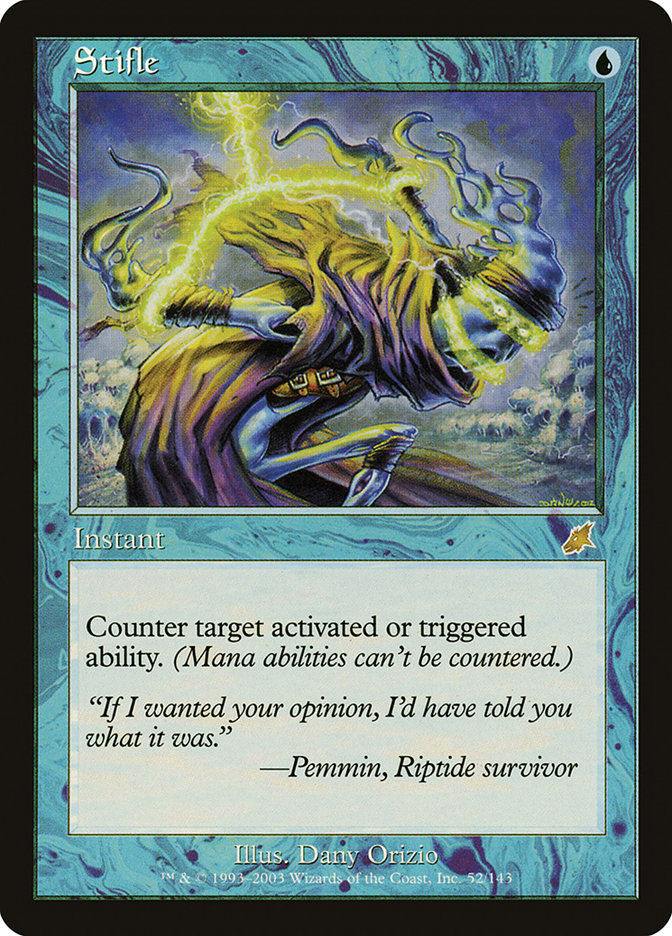The ability to correctly choose the right deck to play in a big tournament is a skill that verges on being an art form. There are simply endless factors
that go into a good and informed deck selection.
Last weekend I attended the Open Series in Cincinnati and my experience at those
tournaments got me to thinking about different processes for selecting decks to play in a big tournament. We all know how good it feels to choose wisely.
It feels great to have a deck that is extremely good in the field that you can personally play at a high level. Most of us also know how bad it feels to
choose poorly, where the exact opposite is true and it feels like an uphill battle all afternoon long.
There is a pretty big difference between selecting a deck to play at a local FNM and selecting a deck to play at a tournament that requires actual travel
to attend. Simply put, the stakes are much higher at a travel tournament. I know that if I am going to spend hours driving to an event and have to throw
down for a hotel for a weekend that I really don’t want to waste the opportunity by playing a mediocre deck.
In today’s article I am going to discuss the decks that I chose to play in last weekend’s Standard and Legacy Opens: Naya Hexproof and RUG Delver.
In Standard I Played Naya Hexproof (5-5)
One thing that tends to be true going into a new format is that very aggressive decks are generally very popular and do well right out of the gate.
I had been working on a very aggressive BR Aggro deck for the tournament during the week leading up to the event. In retrospect, I kind of regret not
playing the deck at the Open because I’m fairly certain I would have had a better result.
So many black Savannah Lions…
Creatures (25)
- 2 Gore-House Chainwalker
- 4 Rakdos Cackler
- 1 Exava, Rakdos Blood Witch
- 4 Spike Jester
- 2 Tymaret, the Murder King
- 4 Tormented Hero
- 4 Gnarled Scarhide
- 4 Mogis's Warhound
Lands (22)
Spells (13)
Sideboard

The B/R deck has one mission and that mission is to attack.
If I hadn’t decided to switch to Hexproof, this is the 75 that I would have sleeved up.
On Friday afternoon I talked to several friends and asked them what they thought were the best decks to play at the SCG Open. The responses that I got
seemed to fall squarely into two distinct camps: “Play Naya Hexproof!” or “Play some other deck (it only loses to Hexproof!)”
The little that I actually played with the Hexproof deck was mostly against my B/R Aggro deck. In the games that I played I found that the Hexproof deck
was really good against my aggro deck. My thought process going into the tournament was that if lots of people were thinking like I was initially thinking
and playing hyperaggressive decks, Hexproof would be a really good call.
The biggest reason that I ended up with a mediocre record of 5-5 was that the Naya build that I ended up playing was really suboptimal. I took two
different lists, Michael Jacob’s list and a list from Magic Online,
and merged them together. The biggest problem was that the mana base that I chose to play simply wasn’t very good. If I had more time to play a bunch of
games with the deck I’m confident that I would have fixed these mana issues.
Playing a deck that you don’t have a ton of experience with in a big event is always a big risk. Sometimes it isn’t possible to actually test out a deck
and have a ton of games under one’s belt, such as if you find out about a sweet new deck right before an event but don’t have time to actually play a lot
with it beforehand.
I was overall pretty impressed with the Hexproof deck and think that I will stick with it for a while moving forward. Here’s the version of the deck that I
would play moving forward:
Creatures (18)
Lands (22)
Spells (20)
- 4 Ethereal Armor
- 3 Boros Charm
- 4 Madcap Skills
- 2 Gift of Orzhova
- 4 Unflinching Courage
- 1 Chained to the Rocks
- 2 Banishing Light
Sideboard

This version of the deck isn’t the one that I played in the Open, but I how I would build the deck now, having learning what I did at the tournament. The
mana in this deck is much better than what I played before.
The other problem with the deck I played on Saturday was that because I didn’t have a ton of experience playing with the deck (and the format being
completely new) I didn’t exactly know what cards I wanted in my sideboard. For the most part in the tournament I didn’t even use my sideboard, because I
simply didn’t have the cards that I needed in the match ups that I ended up playing against.
The most important cards that I missed for the sideboard were:
I don’t give a crap about Lifebane Zombies and Brain Maggots.
Electrickery would have come in from my sideboard in most of my matches during the tournament. I played against a ton of black decks and my post-sideboard
downfall was against Lifebane Zombie and Brain Maggot stripping away my cards.
The Aegis of the Gods would have protected my hand from discard spells like Thoughtseize, Duress, Brain Maggot, and Lifebane Zombie and protected my face
from Skullcracks and Devour Flesh.
I also played against a lot of Gnarled Scarhides, Tormented Heroes, Brain Maggots, and Lifebane Zombies decks. Against these all-in black decks,
Electrickery would have been a complete and utter blowout. There were multiple games where I helplessly died where I wearily lamented that Elecktrickery
would have been a four-for-one and won me the game on the spot.
Four of my five losses were to various flavors of black decks and those matches were all very close three-game sets. I think that if I had some useful
sideboard cards to bring in like Aegis of the Gods or Electrickery against the black aggro decks that I would have been in good shape to have won.
Another thing to keep in mind is that it’s important to actually play the matchups. MJ’s Hexproof deck had Aegis of the Gods in the sideboard and I
dismissed the card. I thought, “It’ll just die and having a creature like Fiendslayer Paladin would just be better since it is like having another Hexproof
creature.”
Not Hexproof!
In practice, Fiendslayer Paladin was terrible for me all day long. It was quite slow and oftentimes was stripped from my hand by Lifebane Zombie. The B/W
decks had Banishing Light to kill it, which made it a creature that I didn’t want to actually put pants on.
The big lesson I learned about deck selection from my experience with Naya Hexproof was that while I think my heart was in the right place in trying to
play a deck that I thought was a sweet metagame call that actual game play experience is a must. Understanding how one’s deck works in each and every match
up is so much more important that actually having the best metagame deck.
Naya Hexproof Overperformers
A real workhorse!
Voice of Resurgence was the best card in my deck by a mile. On the one hand, I know how awesome the card is so I’m not surprised–but on the other, I
didn’t really expect a non-Hexproof creature to be the best creature in my Hexproof deck.
I played against a lot of aggressive decks and Voice’s ability to block twice was unbelievable. If you’re considering playing Hexproof and are not sold on
putting the Voice in the main deck, I would strongly encourage having it in the sideboard. It blocks for days, taps down Desecration Demon like a boss,
protects you from counterspells, and only costs two mana!
To the skies!
I was really impressed with Gift of Orzhova. In many cases, especially against green decks, going to the skies was absolutely key to me having the ability
to win. There are some games where you can’t make the world’s most gigantic first strikeing lifelinker and it is possible for an opponent to make a good
block on a Madcap Skills, Unflinching Courage, Hexproof Creature. Gift lets you fly over all of their fatties and race profitably with the lifelink.
In Legacy I Played RUG Delver, 27th (6-2-1)
I know that I made a resolution to play combo and that I broke that resolution. I just haven’t felt like Sneaking and Showing lately. The deck is
absolutely fantastic and I think it’s probably the overall best deck in the format.
Besides, I played combo in Standard so I wanted to mix it up for Legacy…
Last weekend I was on a mission. I needed to know if RUG Delver was a good deck or not. Obviously, it makes lots of Top 8s and wins quite a bit, but
whenever I’m playing the deck I always feel like I am going to lose…and then I win.
I have never taken RUG Delver to a big tournament before, mostly out of fear I suppose. I have played the deck in a ton of smaller tournaments and I have
always done really well. Despite doing well at the tournaments with the deck, I always sort of feel like “I got lucky” after every match playing RUG.
“If my opponent wouldn’t have run into my Daze or Stifle.”
“If my opponent would have had a removal spell.”
“If my opponent would have Wasteland-ed my only land.”
If…if…if…if…if… I would have lost.
The thing is, I wasn’t really losing that much…
So, I had to know if I was riding a lucky streak with a mediocre deck or if the deck could actually hold up over a long tournament.
All things considered, I was really impressed with the deck.
After playing the deck for nine rounds, there are a few changes I would make to the sideboard, but I was really happy with the maindeck. Here’s the version
of the deck I would play if I could make a few small changes and run the tournament back.
Creatures (12)
Lands (18)
Spells (30)

I really enjoyed playing the RUG deck last weekend. One thing that I can say about RUG Delver after playing nine rounds with it: the deck either gives you
absolutely free wins or it makes you work really, really hard for a win!
The “free win” games are the ones where you are able to manascrew the opponent on the back of Stifle and Wasteland and then use cards like Daze and Spell
Pierce to really dig the dagger in. RUG is a deck that is designed to get ahead and stay ahead and the games where you are behind can be really tricky to
win because many spells tend to push advantage from ahead. For instance, imagine the difficulty of dealing with a Batterskull, True-Name Nemesis, or
Tarmogoyf! There are not really cards in the deck that deal with these cards once they actually get into play.
The goal is obviously to never allow these more powerful spells to enter the battlefield, which is something that RUG really excels at.
RUG Delver Overachievers
I don’t always play tempo, but when I do, I play Clique.
My sideboard Vendilion Cliques were straight-up all-stars. Against combo decks where True-Name Nemesis would typically be a three-mana Delver of Secrets I
swapped my two main deck TNN out for Cliques. The Cliques really ended up coming up strong for me throughout the day and were key to several of my wins.
Stone Rain for U!
Stifle was really good to me last weekend and I can’t imagine playing RUG without it somewhere in the 75. I feel like every time I got into trouble in a
match I would be trying to find a Stifle, or already had a Stifle in my hand and it somehow magically saved the day.
I got to Stifle a Bloodbraid Elf cascade trigger. I Stifled a Batterskull “Living Weapon” trigger. I stifled a Liliana of the Veil -2 ability. I Stifled
Emrakul’s Annhilator trigger. I Stifled a few really key Wastelands that would have ended up crippling me. I simply can’t imagine playing the deck without
the Stifles.
I think that RUG was a really successful deck choice for me because it meets all of the criteria for being a good selection:
1. The deck is powerful and well-positioned.
2. It is a deck that I am comfortable playing.
3. It is a deck where I know the matchups.
4. I had a build of the deck that was fairly well-tuned.
I really believe that all of these elements are critical in order for a player to have success in a tournament.
When you choose wisely, good things will happen.

